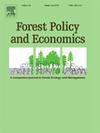Wood-based panel futures price prediction incorporating supply chain features
IF 3.8
2区 农林科学
Q1 ECONOMICS
引用次数: 0
Abstract
This paper proposes a wood-based panel futures price prediction method incorporating supply chain features, aiming to improve prediction accuracy and explore price formation mechanisms. The model constructs a multi-dimensional feature system by integrating upstream material price indices including timber, chemical raw materials, and energy, as well as downstream indicators such as the construction industry prosperity index. To resolve the heterogeneity between daily price data and monthly supply chain features, we design an innovative dual-frequency fusion network (DM-FusionNet). This network processes time-series dependencies in daily data through a bidirectional LSTM branch, extracts long-term patterns from monthly features through a lightweight Transformer branch, and organically combines both types of information through a dynamic fusion mechanism. Experimental results demonstrate that compared to traditional methods, the proposed model achieves significant improvements across multiple evaluation metrics, with a 16.8 % reduction in MSE and an improved R2 value of 0.870. The model exhibits robust performance across different time scales and market conditions, particularly achieving a trend prediction accuracy of 96.1 % over a 60-day prediction period. Feature importance analysis reveals a “dual-dominant” influence mechanism constituted by downstream demand indicators (NHPI) and upstream chemical raw material prices. This research not only enriches the methodological framework for commodity futures price prediction but also provides a practical decision-support tool for participants in the wood-based panel futures market.
结合供应链特征的人造板期货价格预测
本文提出了一种结合供应链特征的人造板期货价格预测方法,旨在提高预测精度,探索价格形成机制。该模型通过整合上游的木材、化工原料、能源等材料价格指数,以及下游的建筑业景气指数等指标,构建了多维度特征体系。为了解决每日价格数据和每月供应链特征之间的异质性,我们设计了一种创新的双频融合网络(DM-FusionNet)。该网络通过双向LSTM分支处理日常数据中的时间序列依赖关系,通过轻量级Transformer分支从月度特征中提取长期模式,并通过动态融合机制将两类信息有机结合。实验结果表明,与传统方法相比,该模型在多个评价指标上都取得了显著的改进,MSE降低了16.8%,改进的R2值为0.870。该模型在不同的时间尺度和市场条件下表现出稳健的性能,特别是在60天的预测期内实现了96.1%的趋势预测精度。特征重要性分析揭示了下游需求指标(NHPI)和上游化工原料价格构成的“双主导”影响机制。本研究不仅丰富了商品期货价格预测的方法框架,而且为人造板期货市场的参与者提供了实用的决策支持工具。
本文章由计算机程序翻译,如有差异,请以英文原文为准。
求助全文
约1分钟内获得全文
求助全文
来源期刊

Forest Policy and Economics
农林科学-林学
CiteScore
9.00
自引率
7.50%
发文量
148
审稿时长
21.9 weeks
期刊介绍:
Forest Policy and Economics is a leading scientific journal that publishes peer-reviewed policy and economics research relating to forests, forested landscapes, forest-related industries, and other forest-relevant land uses. It also welcomes contributions from other social sciences and humanities perspectives that make clear theoretical, conceptual and methodological contributions to the existing state-of-the-art literature on forests and related land use systems. These disciplines include, but are not limited to, sociology, anthropology, human geography, history, jurisprudence, planning, development studies, and psychology research on forests. Forest Policy and Economics is global in scope and publishes multiple article types of high scientific standard. Acceptance for publication is subject to a double-blind peer-review process.
 求助内容:
求助内容: 应助结果提醒方式:
应助结果提醒方式:


